Exploring Colorado’s hauntingly beautiful GHOST TOWNS
BY NATE DAY
IN COLORADO, history lingers in weathered wood and echoing valleys—ghost towns that remind us the bust always followed the boom.
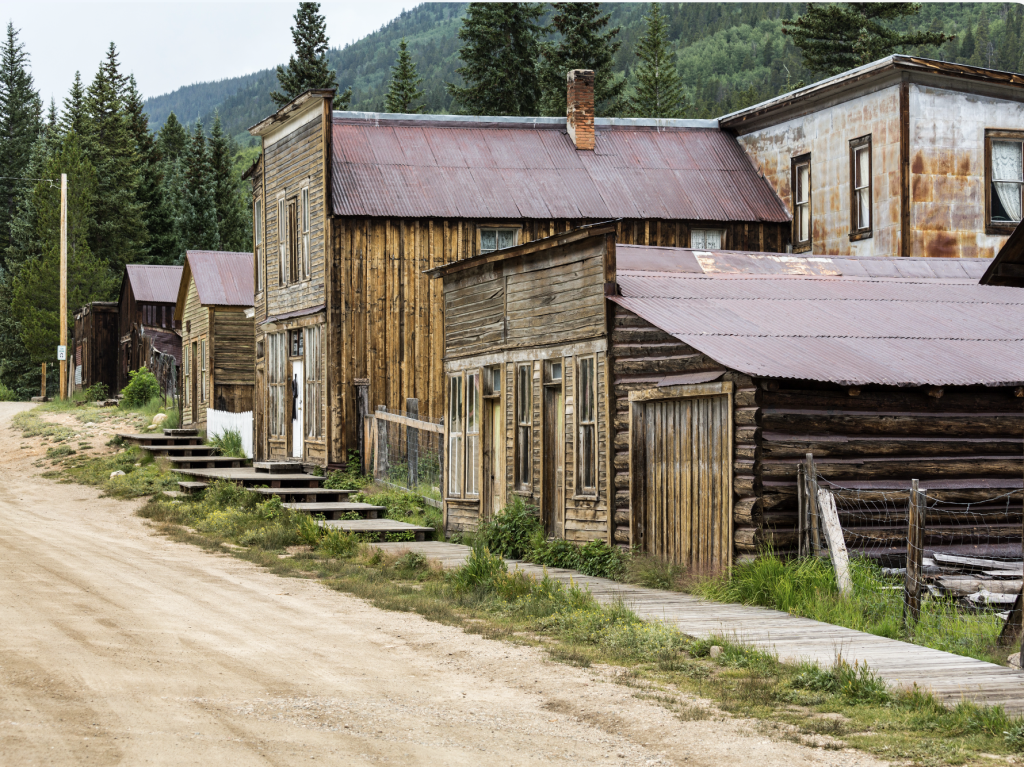
Scattered across the Rockies are remnants of once-bustling towns, now reduced to weathered cabins, creaking storefronts, and whispers on the wind. These ghost towns tell stories of boom and bust, of miners chasing veins of silver and gold, of families carving out livelihoods in the thin mountain air—only to vanish as quickly as they came. Today, these towns are not just relics; they are atmospheric destinations where travelers can step back in time and imagine the grit and grandeur of frontier life.
The pages that follow explore some of Colorado’s most hauntingly beautiful ghost towns—Ashcroft, St. Elmo, Summitville, Gothic, and Crystal Mill—along with the legends that linger and tips for visiting these often-remote relics of the past.
Ashcroft: Glamour and Decay in Castle Creek
Tucked twelve miles south of Aspen along Castle Creek Road, Ashcroft ghost town feels more like a movie set than a relic of ruin. Founded in 1880 during the silver boom, Ashcroft swelled to nearly 2,000 people at its peak. The town boasted more than a dozen saloons, multiple newspapers and even an opera house. But the silver lodes proved shallow, and by the 1890s, the glory had faded. By the 1930s, only a handful of eccentric residents remained.
Ashcroft’s lore includes whispers of outlaws, fortune seekers and an ambitious plan by two World War II veterans to transform the site into a ski resort—a dream that fizzled when neighboring Aspen stole the spotlight.
Today, a dozen structures stand preserved against the alpine backdrop: a jail with iron bars still intact, a hotel with ghostly echoes of grand balls, and cabins with sagging roofs and frostbitten doors. Visitors have reported paranormal activity, including sightings of ghosts of miners along the road, so be on the lookout. The Aspen Historical Society maintains the site, and docents in period dress sometimes greet visitors.
How to visit: Ashcroft is easily accessible by car in the summer. In winter, visitors are invited to explore the area on snowshoes or cross-country skis, making for a magical—if strenuous—journey through snow-laden aspen groves.
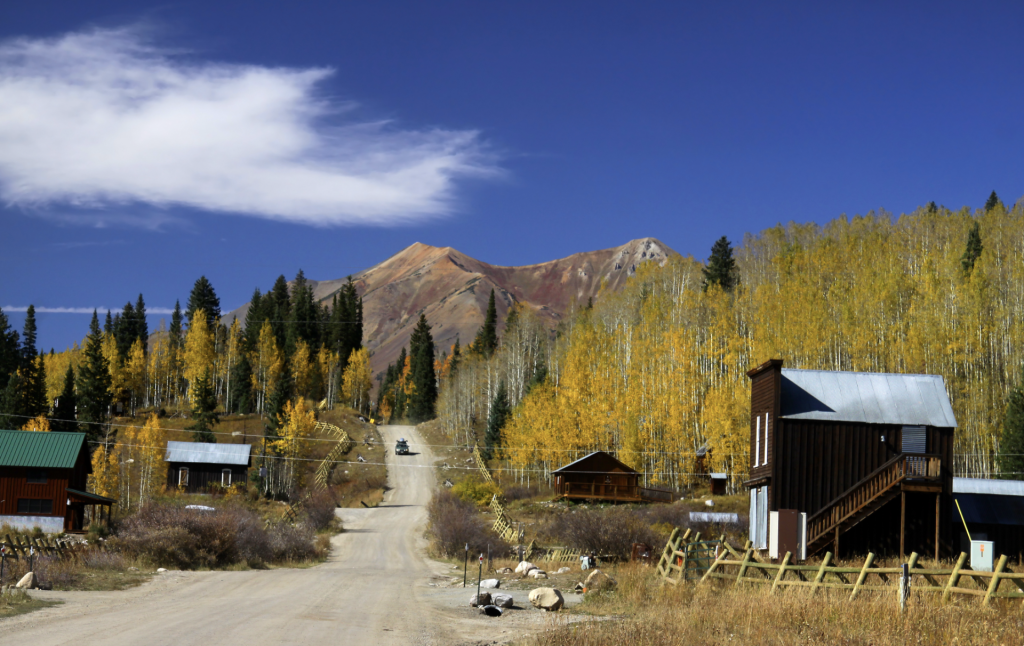
St. Elmo: The Ghost Town that Refused to Die
Nestled in the Sawatch Range, 20 miles southwest of Buena Vista, St. Elmo may be Colorado’s most photogenic ghost town. Founded in 1880, it thrived on gold and silver mining. At its height, the whistlestop bustled with 2,000 residents, a telegraph office, five hotels and—famously—more than forty saloons.
Local lore swirls around Annabelle “Dirty Annie” Stark, the eccentric daughter of one of St. Elmo’s founding families. Known for her disheveled appearance and brash demeanor, she stayed in the town long after others left. In fact, after the postmaster died in 1952, she and her brother were the only two inhabitants.
Today, visitors can stroll down Main Street where original false-fronted buildings lean slightly as if bowing under the weight of history. The general store, still in operation seasonally, sells trinkets and cold sodas to dusty travelers. A handful of cabins are privately owned, and summer brings ATV and Jeep tours that rattle through the narrow gulches. Visitors have reported sightings of Dirty Annie and other paranormal activity.
How to visit: St. Elmo is accessible by a graded dirt road, passable by most vehicles in summer. Winter access is limited, often requiring snowmobiles. Stop at nearby Chalk Creek for fishing or hike to ghostly Hancock, another forgotten mining settlement.
Summitville: Collapse and Consequence in the San Juans
High in the San Juan Mountains near Del Norte lies Summitville, a ghost town with both historic romance and modern infamy. Founded in 1870 after a gold strike, Summitville was once home to 600 hardy souls who endured brutal winters at 11,000 feet. Cabins clustered along the ridges, and a main street pulsed with mining commerce.
What remains most vivid today are the collapsed cabins—timbers scattered across meadows like broken ribs of the past. They’re stark reminders of how unforgiving this altitude was, where snow could bury roofs and food supplies ran thin.
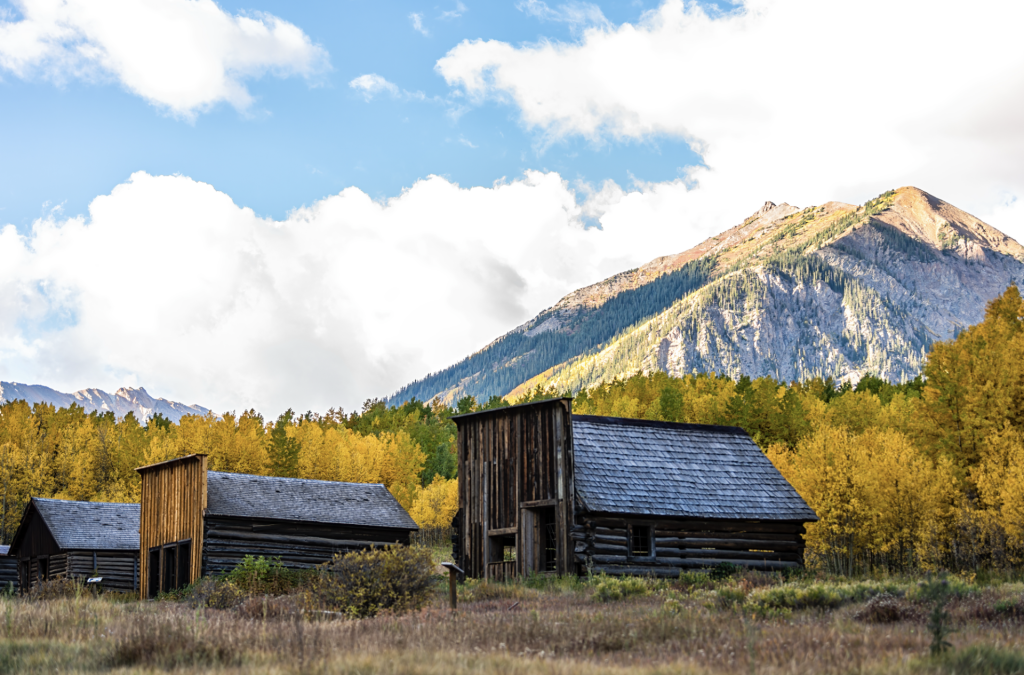
But Summitville is also infamous for a modern environmental disaster. In the 1980s, a cyanide-leach mining operation contaminated nearby waterways, leaving a toxic legacy that still requires federal cleanup. The ghost of that catastrophe lingers alongside the ruins of the 19th-century town.
How to visit: Summitville is remote. Be prepared for rough roads and rapidly changing weather. Respect posted warnings—some areas remain under environmental remediation. The drive itself, with golden quakies and jagged San Juan peaks, is worth the effort.
Gothic: From Bustling Mining Town to Ecological Haven
At first glance, Gothic doesn’t quite look like a ghost town—it’s still alive, though not in the way its founders imagined. Located just north of Crested Butte, Gothic sprang up in 1879 after silver was discovered. The town grew quickly, with saloons, hotels and a lively main street. But by the 1890s, the boom had gone bust, leaving Gothic largely abandoned.
In 1928, ecologist John C. Johnson saw potential in the abandoned settlement and established the Rocky Mountain Biological Laboratory. Since then, scientists from around the world have come here each summer to study alpine ecosystems. Instead of miners, Gothic now houses researchers cataloging wildflowers, butterflies and the impacts of climate change.
The ruins of cabins mingle with lab facilities, creating a striking juxtaposition of past and present. Visitors can wander among the weathered remains while learning about the cutting-edge science conducted here.
How to visit: Gothic is easily accessible by car in summer via Gothic Road from Crested Butte—as you pass the cemetery on your way out of town, watch for the disembodied hitchhiker looking for a ride to the ghost town. In winter, the road closes, and the area becomes a popular destination for Nordic skiing and fat biking. Stop at the visitor center for interpretive displays.
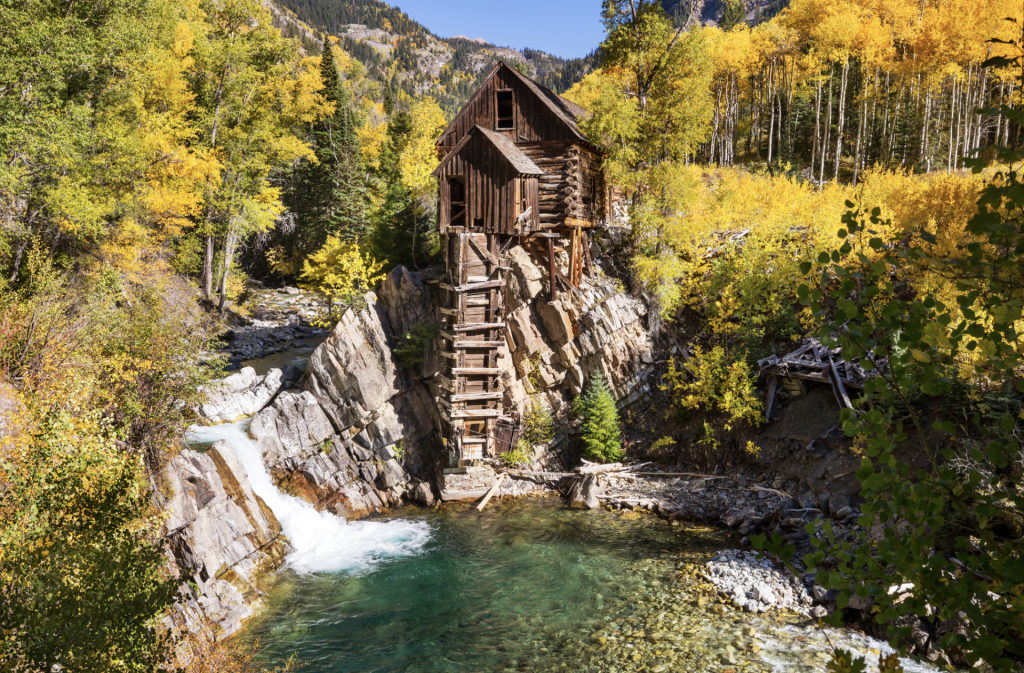
Crystal Mill: The Iconic Survivor
Few images of Colorado are as striking as the Crystal Mill near Marble. Perched precariously above the rushing Crystal River, the wooden powerhouse—often misidentified as a mill but actually a compressor station for local mines—looks like it’s clinging to the cliff by sheer willpower. Built in 1892, it once supplied energy to nearby silver mines.
Though the town of Crystal dwindled by the early 1900s, the mill endures as one of the most photographed sites in the state. The lore here is less about spectral apparitions and more about the structure itself—a defiant survivor of snow, floods and time.
Visiting the Crystal Mill feels like stepping into a painting. The juxtaposition of weathered timbers against turquoise river rapids, framed by autumn aspens or summer wildflowers, is unforgettable.
How to visit: Reaching Crystal Mill requires commitment. The road from Marble is rough and best suited for high-clearance 4×4 vehicles, ATVs or a guided Jeep tour. Many visitors also hike or mountain bike the nearly 10–mile route, although the trail is challenging (plan a whole day to complete it). Access is restricted to private land, so respect posted signs and entry fees.
Why Ghost Towns Matter
Wandering these towns isn’t just sightseeing—it’s time travel. You can almost hear the clang of pickaxes in Ashcroft, feel the grit of Annabelle Stark’s stubbornness in St. Elmo, imagine the crushing silence of a Summitville winter, marvel at Gothic’s transformation from saloons to science and stand in awe before Crystal Mill’s defiant silhouette.
Colorado’s ghost towns remind us that boom times never last forever, and that nature always reclaims its territory. That history is written not only in gold strikes and railroads, but also in collapsed cabins, sagging porches, and the echoes of lives lived hard and fast.
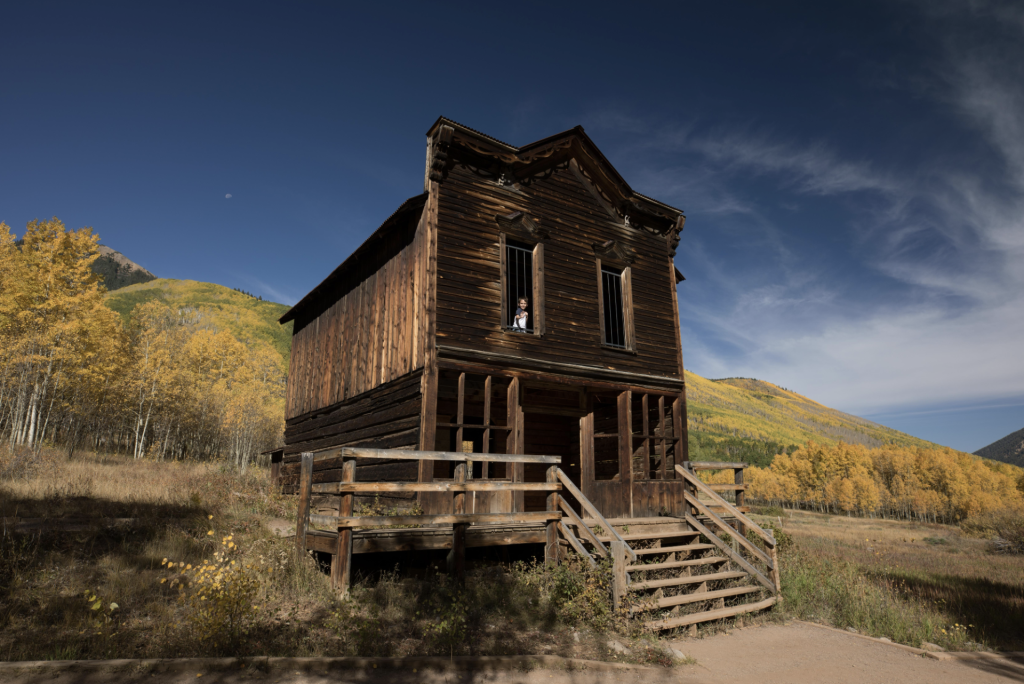
For travelers willing to venture off the beaten path, these hauntingly beautiful sites offer more than Instagram backdrops—they offer a tangible connection to the stories that shaped the West.
Practical Tips for Ghost Town Wanderers
Visiting Colorado’s ghost towns isn’t like pulling into a museum parking lot. These are wild, fragile places—often remote, sometimes dangerous, always demanding respect.


